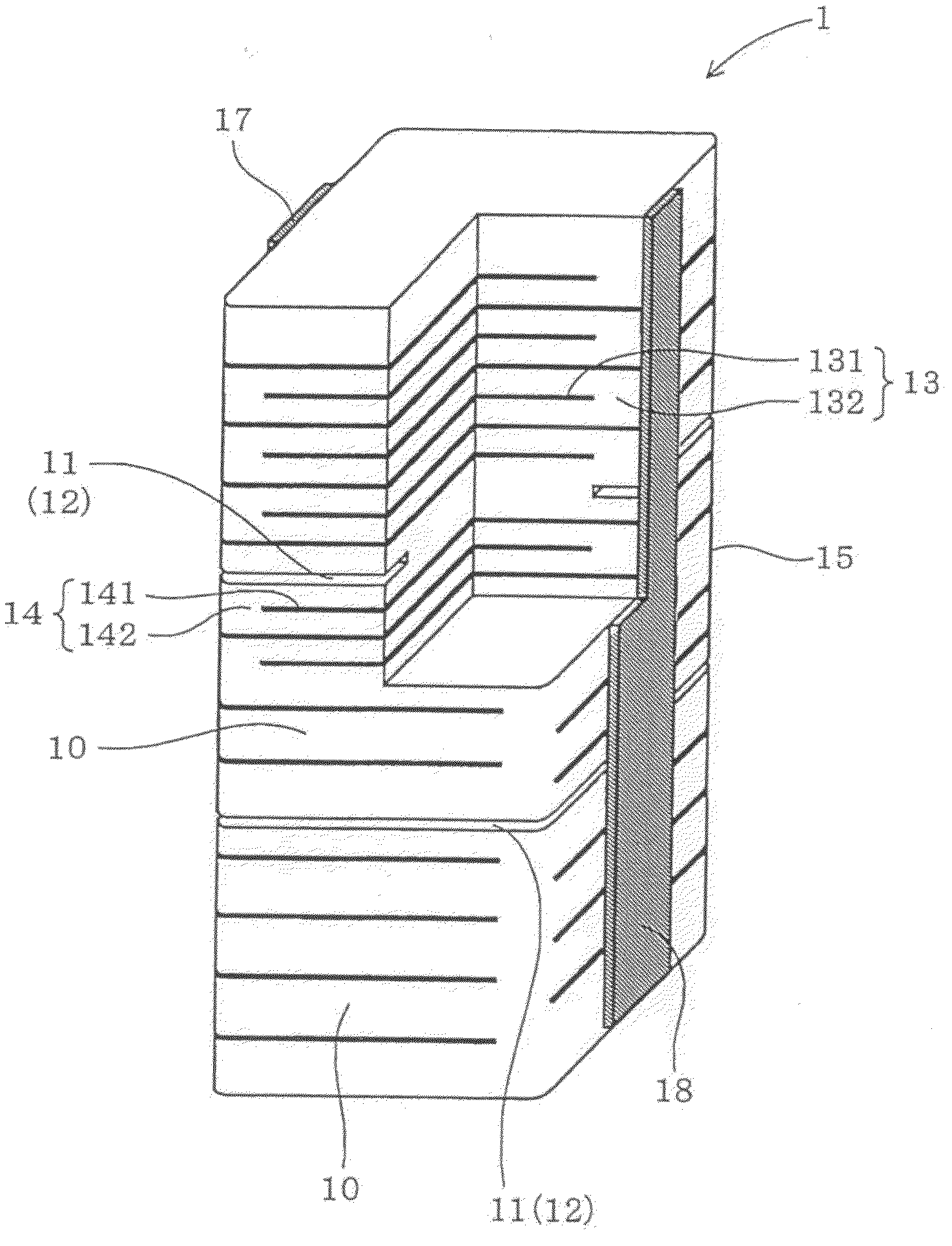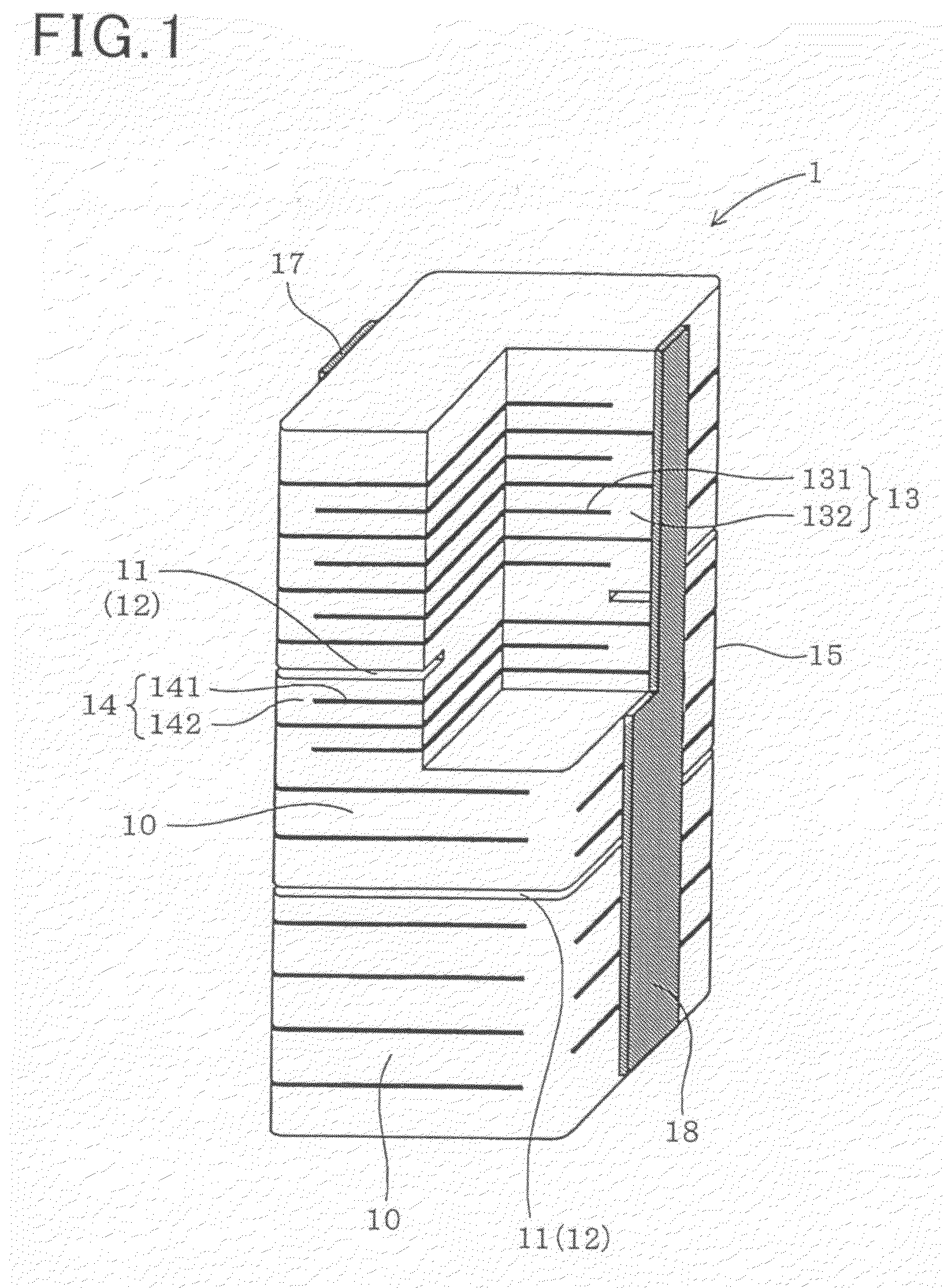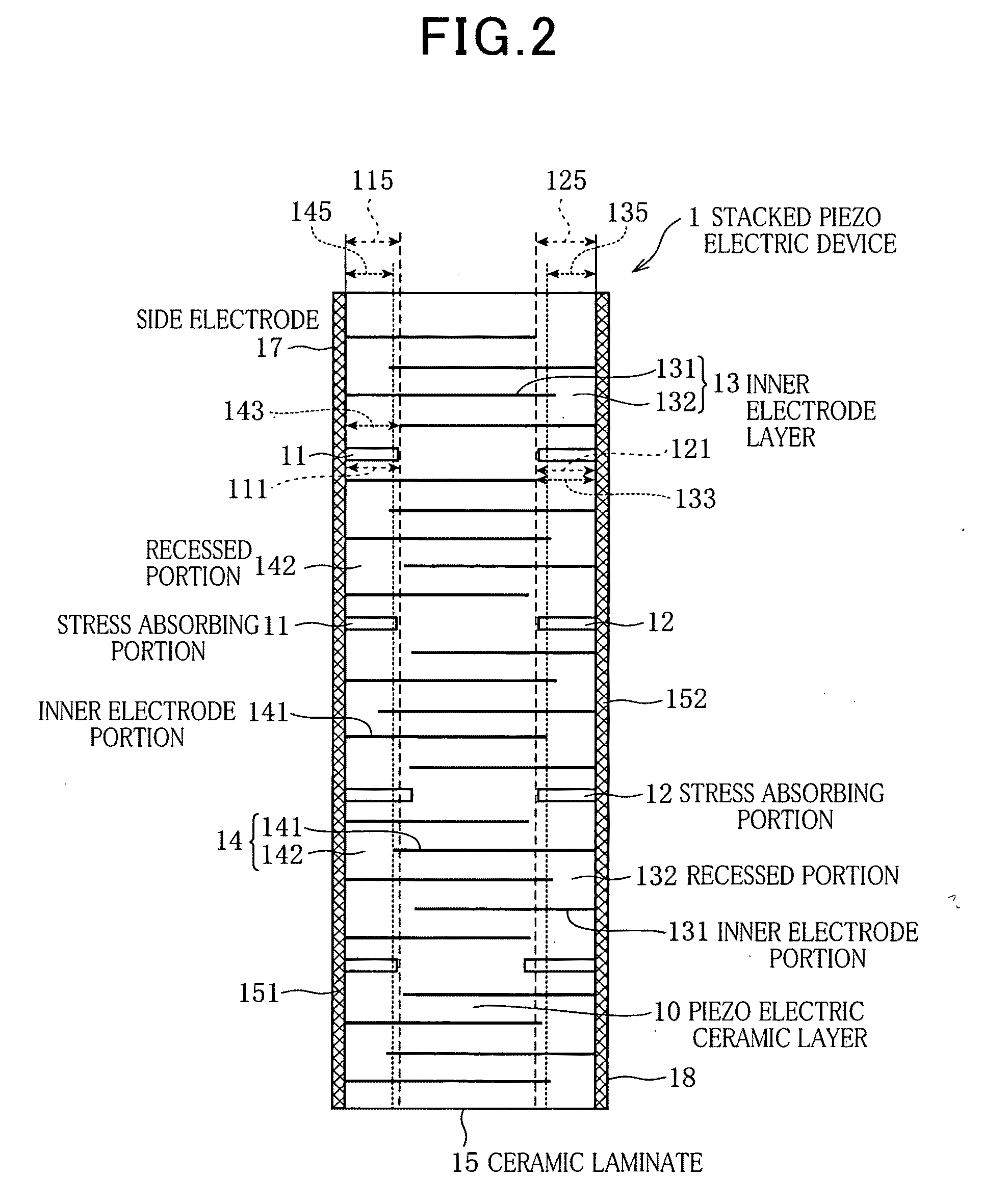Stacked piezoelectric device
a piezoelectric device and piezoelectric technology, applied in the direction of generators/motors, mechanical equipment, machines/engines, etc., can solve the problems of sacrificing the amount of displacement, concentrating stress at the interface, and cracks in the device, so as to avoid the drop in insulation resistance.
- Summary
- Abstract
- Description
- Claims
- Application Information
AI Technical Summary
Benefits of technology
Problems solved by technology
Method used
Image
Examples
embodiments
Embodiment 1
[0183]Next, the stacked piezoelectric device according to embodiments of the invention will be described below using FIGS. 1 to 10.
[0184]As illustrated in FIGS. 1 to 3, the stacked piezoelectric device 1 of this embodiment has a ceramic laminate 15 made by stacking the plurality of piezoelectric layers 10 and the plurality of inner electrode layers 13 and 14 alternately and the pair of side electrodes 17 and 18 fanned on side surfaces of the ceramic laminate 15. The inner electrode layers 13 and 14 include the conductive inner electrode portions 131 and 141 and the recessed portions 132 and 142 defined by retreating outer peripheral ends of the inner electrode portions 131 and 141 inwardly from the outer peripheral surface of the ceramic laminate 15. The inner electrode layers 13 and 14 are connected electrically to side electrodes 17 and 18, respectively, which are different from each other. Specifically, the inner electrode layers 13 and 14 are equipped with the inner ...
embodiment 2
[0237]Next, another variant of the stacked piezoelectric device of the invention will be described using FIGS. 18 to 27. The stacked piezoelectric device of this embodiment is a device in which the pattern in which the inner electrode portion and the recessed portion of the inner electrode layer is somewhat different from the embodiment 1.
[0238]As illustrated in FIGS. 18 to 20, the stacked piezoelectric device 1 of this embodiment, like in the embodiment 1, has the ceramic laminate 15 made by stacking the plurality of piezoelectric layers 10 and the plurality of inner electrode layers 13 and 14 alternately and the pair of side electrodes 17 and 18 formed on side surfaces of the ceramic laminate 15. The inner electrode layers 13 and 14 include the conductive inner electrode portions 131 and 141 and the recessed portions 132 and 142 defined by retreating outer peripheral ends of the inner electrode portions 131 and 141 inwardly from the outer peripheral surface of the ceramic laminate...
embodiment 3
[0292]Next, the stacked piezoelectric device according to the embodiment of the invention will be described using FIGS. 32 to 35.
[0293]As illustrated in FIGS. 32 to 34, the stacked piezoelectric device 1 of this embodiment, like in the embodiment 1, has the ceramic laminate 15 made by stacking the plurality of piezoelectric layers 10 and the plurality of inner electrode layers 23 and 24 alternately and the pair of side electrodes 17 and 18 formed on side surfaces of the ceramic laminate 15. The inner electrode layers 23 and 24 include the conductive inner electrode portions 231 and 241 and the recessed portions 232 and 242 defined by retreating outer peripheral ends of the inner electrode portions 231 and 241 inwardly from the outer peripheral surface of the ceramic laminate 15. The inner electrode layers 23 and 24 are connected electrically to side electrodes 17 and 18 alternately which are different from each other.
[0294]The ceramic laminate 15 has the stress absorbing portions 11...
PUM
| Property | Measurement | Unit |
|---|---|---|
| depth | aaaaa | aaaaa |
| depth | aaaaa | aaaaa |
| depths | aaaaa | aaaaa |
Abstract
Description
Claims
Application Information
 Login to View More
Login to View More - R&D
- Intellectual Property
- Life Sciences
- Materials
- Tech Scout
- Unparalleled Data Quality
- Higher Quality Content
- 60% Fewer Hallucinations
Browse by: Latest US Patents, China's latest patents, Technical Efficacy Thesaurus, Application Domain, Technology Topic, Popular Technical Reports.
© 2025 PatSnap. All rights reserved.Legal|Privacy policy|Modern Slavery Act Transparency Statement|Sitemap|About US| Contact US: help@patsnap.com



